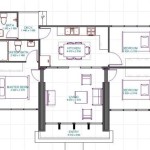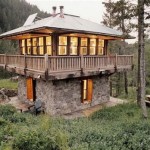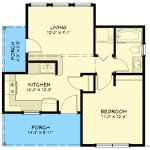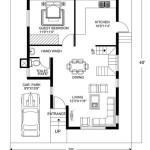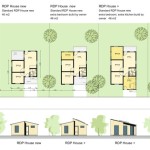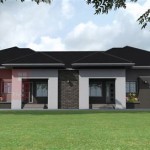Build A Dog House: Comprehensive Plans and Considerations
Providing a secure and comfortable shelter for a canine companion is an act of responsible ownership. Constructing a dog house, rather than purchasing a pre-fabricated model, offers the advantage of customization to the dog's specific needs and the owner's aesthetic preferences. A successful dog house build requires careful planning, adherence to proper construction techniques, and consideration of the local climate.
The construction process necessitates detailed dog house plans. These plans serve as a blueprint, guiding the builder through the dimensions, materials, and assembly procedures. Utilizing well-defined plans minimizes errors, reduces material waste, and ensures a structurally sound and weatherproof dwelling for the animal.
Key Considerations Before Building
Prior to commencing any construction, several foundational elements must be addressed. Ignoring these preliminary steps can lead to a substandard final product or a structure poorly suited for its intended occupant.
Dog Size and Breed: The size of the dog is the primary determinant of the dog house's dimensions. The dog should be able to stand, turn around, and lie down comfortably inside. Breed-specific considerations are also crucial. For instance, breeds prone to hip dysplasia may require a lower entrance and a more spacious interior to facilitate ease of movement. Breeds with thick fur may require greater ventilation to prevent overheating, particularly in warmer climates. Measurement of the dog's height at the shoulder, length from nose to tail base, and width while lying down are necessary for accurate sizing. Add a safety margin of several inches to each measurement to provide adequate room for maneuvering and growth, if applicable.
Climate and Location: The prevailing climate conditions will dictate the building materials and design features. In colder regions, insulation is paramount to retain heat. A raised floor can prevent ground moisture from entering the dog house. A small, offset entrance can minimize drafts and retain warmth. In warmer climates, ventilation is of utmost importance. Consider incorporating vents in the roof or sides of the dog house. A light-colored roof will reflect sunlight and reduce internal temperatures. The location of the dog house is also critical. Placement in a shaded area can provide relief from the sun's intensity. Orienting the entrance away from prevailing winds can mitigate drafts. Avoid placing the dog house in areas prone to flooding or water accumulation.
Material Selection: The choice of building materials significantly impacts the durability, aesthetics, and cost of the dog house. Pressure-treated lumber is resistant to rot and insect infestation but requires caution when handling due to potential chemical exposure. Untreated lumber is a more environmentally friendly option but requires regular sealing and painting to prevent deterioration. Plywood is a versatile material for constructing walls and roofing but should be exterior-grade to withstand the elements. Roofing materials such as asphalt shingles, cedar shakes, or metal roofing offer varying degrees of weather protection and aesthetic appeal. Insulation materials such as fiberglass batting, rigid foam board, or spray foam can enhance thermal performance. Consider the potential for chewing when selecting interior materials, as some dogs may gnaw on the structure. Non-toxic paints and sealants are essential to ensure the dog's safety.
Essential Elements of Dog House Plans
Comprehensive dog house plans provide detailed instructions and specifications for the entire construction process.
Detailed Drawings: The plans should include scaled drawings showing the dimensions of all components, including the walls, floor, roof, and entrance. These drawings should provide multiple views (e.g., front, side, top) to clearly illustrate the assembly process. Detailed drawings are essential for accurate cutting and fitting of materials. Exploded views can further clarify the order in which components are assembled. The plans should specify the types and quantities of fasteners (e.g., screws, nails) required for each connection.
Material List: A comprehensive material list details all the materials required for the project, including the dimensions, quantity, and type of each item. This list facilitates accurate purchasing and minimizes the risk of running out of materials during construction. The material list should include lumber, plywood, roofing materials, fasteners, insulation, paint, sealant, and any other necessary components.
Step-by-Step Instructions: The plans should include clear, concise, and step-by-step instructions for each stage of the construction process. These instructions should be easy to understand and follow, even for individuals with limited carpentry experience. Each step should be accompanied by diagrams or photographs illustrating the procedure. The instructions should cover all aspects of the project, including cutting materials, assembling the frame, installing the floor, walls, and roof, and applying finishing touches.
Construction Techniques and Safety Precautions
Adhering to proper construction techniques and safety precautions is paramount when building a dog house.
Accurate Cutting and Measurement: Precise measurements and accurate cuts are essential for ensuring a structurally sound and weatherproof dog house. Use a tape measure, square, and level to ensure that all components are cut to the correct dimensions and that the frame is square and plumb. A circular saw or miter saw can be used for making accurate cuts. Always wear safety glasses and hearing protection when operating power tools.
Secure Fastening: Securely fastening all components is crucial for creating a durable and long-lasting dog house. Use screws or nails of the appropriate length and type for each connection. Pre-drilling holes can prevent wood from splitting, especially when working with hardwoods. Ensure that all fasteners are driven in straight and flush with the surface of the wood. Use construction adhesive in addition to fasteners for added strength and weather resistance.
Weatherproofing: Weatherproofing the dog house is essential for protecting the dog from the elements. Seal all cracks and joints with caulk or sealant to prevent water from entering. Apply a waterproof coating to the exterior of the dog house to protect it from rain and snow. Ensure that the roof is properly sloped to allow water to drain away from the structure. Consider installing flashing around the entrance to prevent water from seeping in. A raised floor can prevent ground moisture from entering the dog house. Prioritize adequate ventilation to prevent moisture buildup inside the structure.
Safety Precautions: Always wear appropriate safety gear when working with power tools and building materials. This includes safety glasses, hearing protection, gloves, and a dust mask. Work in a well-ventilated area to avoid inhaling dust or fumes. Use caution when handling sharp objects and power tools. Familiarize yourself with the operating instructions for all power tools before using them. Keep children and pets away from the construction site. Be aware of potential hazards such as electrical wires and uneven surfaces.
Beyond the functional aspects of the dog house, consider adding personal touches to enhance its aesthetic appeal. Painting the dog house to match the home's exterior or adding decorative trim can create a visually pleasing structure that complements the surrounding landscape. Consider adding a small porch or overhang to provide additional shelter from the elements. Planting flowers or shrubs around the dog house can further enhance its appearance. Involving children in the decorating process can make the project more engaging and rewarding.
Regular maintenance is essential for preserving the condition and longevity of the dog house. Inspect the dog house periodically for signs of damage or deterioration. Repair any cracks or leaks promptly to prevent further damage. Reapply sealant or paint as needed to protect the wood from the elements. Clean the interior of the dog house regularly to remove dirt and debris. Replace any worn or damaged materials. With proper care and maintenance, a well-built dog house can provide years of comfortable shelter for a canine companion.

Large Dog House Plans Free Construct101

14 Diy Dog Houses How To Build A House Plans Blueprints

Diy Doghouse Gazebo

How To Build A Custom Insulated Dog House Ron Hazelton

Luxury Plans For Dog House Check More At Http Www Jnnsysy Com Diy
:strip_icc()/Beautiful-Pallet-Dog-House-with-Veranda-1-5a202f90494ec90037893a82.jpg?strip=all)
14 Free Diy Dog House Plans Anyone Can Build

13 Diy Doghouse Plans And Ideas The House Of Wood
:strip_icc()/IMG_2589-5a202f1c7d4be800191a3845.jpg?strip=all)
14 Free Diy Dog House Plans Anyone Can Build

How To Build A Dog House Plans Diy

8 Diy Dog House Ideas For Crafty Pas

